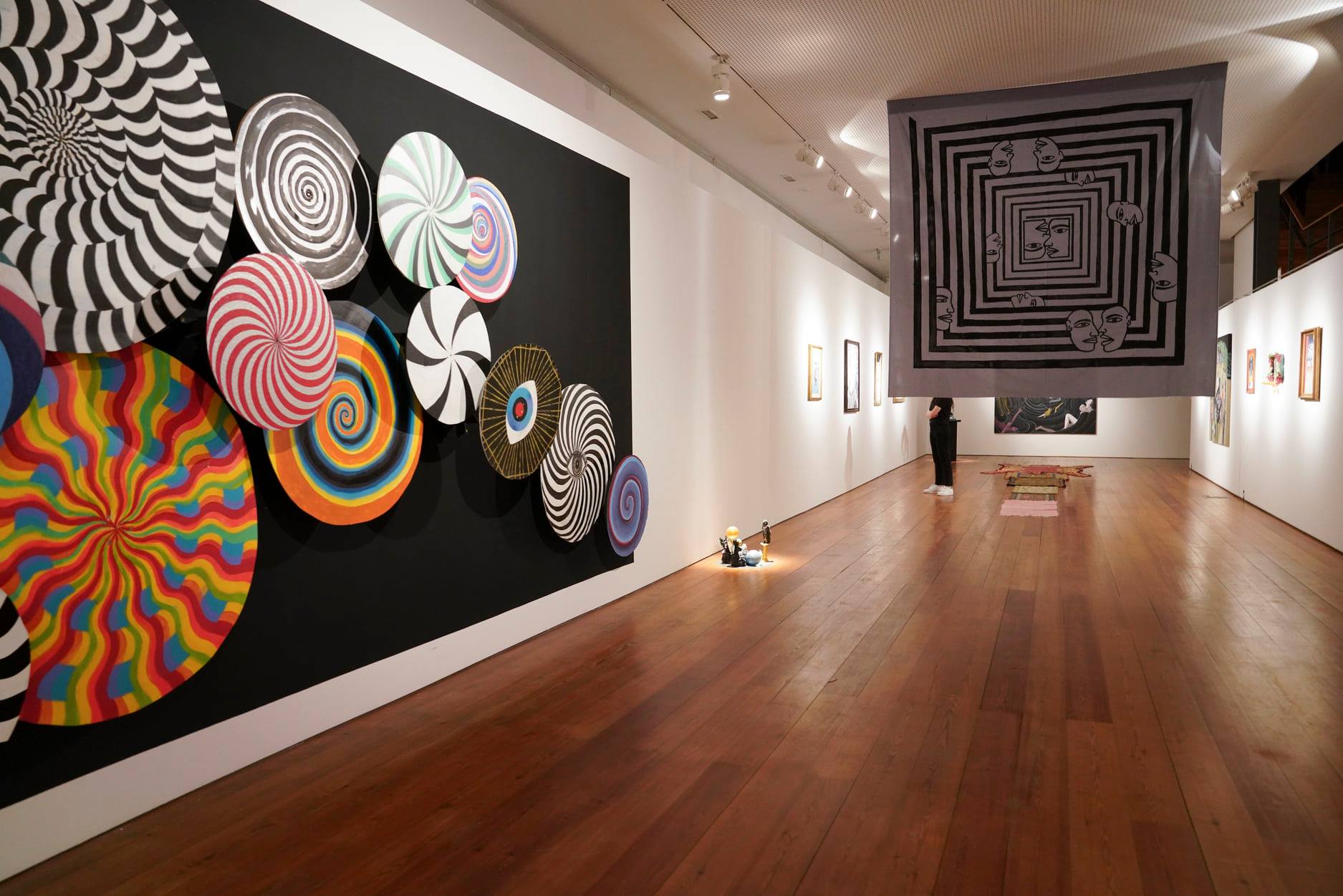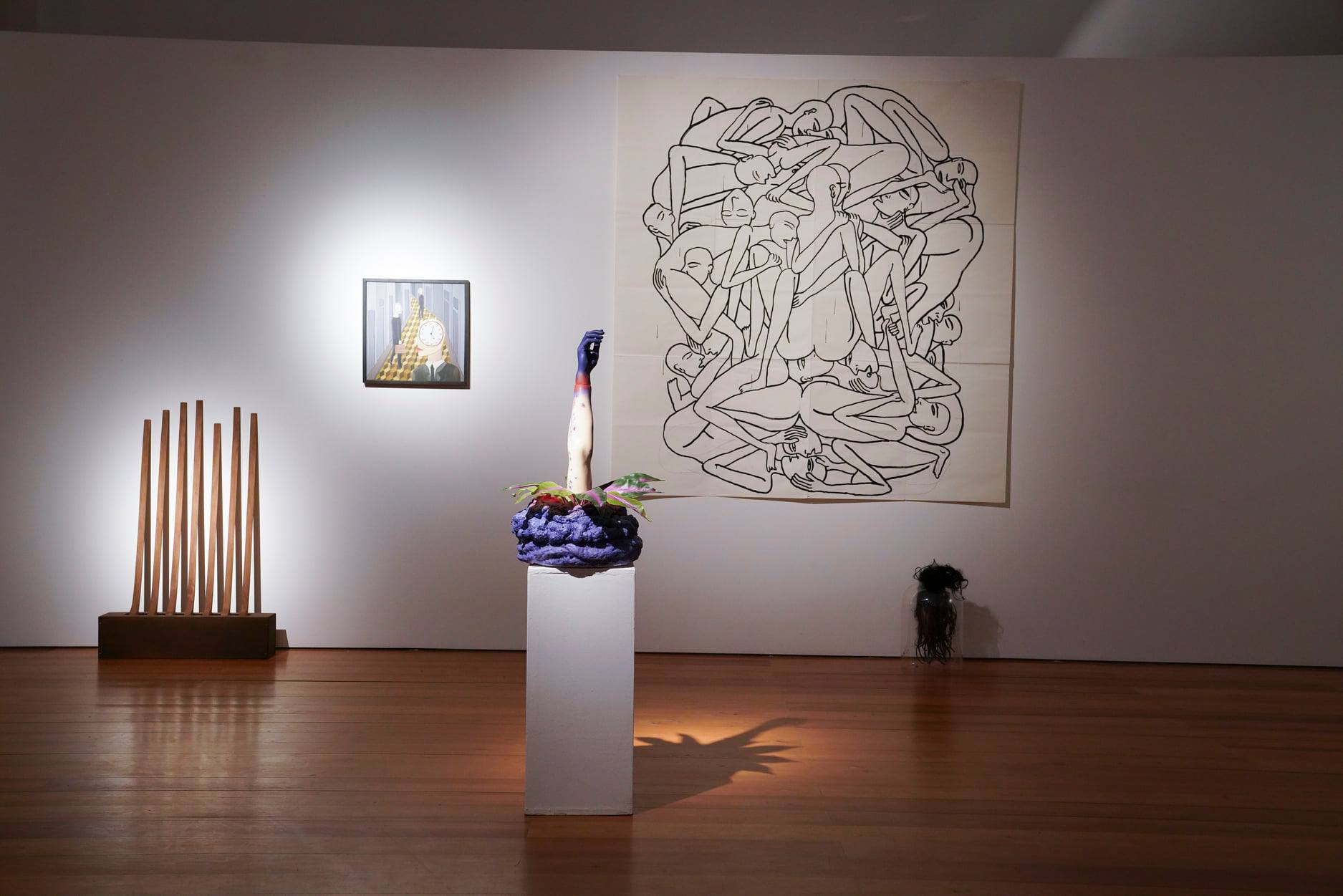AUTHOR: IVO MARTINS
EDITION: (Catalogue) Centro Cultural Vila Flor DATE: July 2021
Art currently exists in a kind of image-based torpor, dormant in the shadow of a disturbing inertia where works are born under the effect of dangerous anaesthesias, the indolence of which causes discomfort. In general, it can be said that the art of the present is conceptually cynical and channels people towards dangerous demonstrations of irony, many of which are of no interest. Cynicism soon leads to a bad conscience.
We live constantly with a huge sense of exhaustion, sterility without consequence, an exhaustion of forms and methods that has invaded the entire cultural spectrum. Everything has become more political and economic, and the growing manifestations of populism, transformed into spectacle and entertainment by the exaggeration of treatment by the media, have become part of our daily destiny. In this absence of faith about the present and future, we sense an acceptance of failure, which has destroyed our fanciful predictions.
We are in a world in which stylistic innovation is no longer possible. Each creative gesture generates a commonplace occurrence, which in turn engenders banalities. That which is commonplace adds saturation and sequential repetitions, leaving artists to imitate moribund styles and speak through masks, using stylistic voices locked in the tomb of the imaginary stories of humanity. In contemporary culture, nothing seems to be changing; utopian and promethean ambitions, which have been hidden in our cultural genetic code for many years and replaced by global successes, brutally reductive, pragmatic and utilitarian versions of a false reality.
The exhibition “Movimentos Bruxos” (Bewitched Movements) is a set design, created in an artificially reconstructed space, in which elements of our worldly experiences are brought together. What is observed are unlikely associations of objects that generate ideas, and new configurations of images are also organised that, due to their vulgarity, should not surprise us, just as when we look around us from inside a car in the middle of the highway, we are not surprised to contemplate a series of lifeless artefacts. The exhibition transforms the space into a symbolic field of variable dimensions, whose shapes trigger sensory ramblings into hitherto unexplored pictographic images. The things we observe may be spectra of multiple images, which have been redefined and appropriated in the meantime, used as a denial. In this presentation there is a kind of obscure manifestation, as part of a known totality, that resembles an enormous falsification.
This exhibition does not intend to show anything of relevance - such as people's suffering or their despair and unhappiness, nor does it present a vision of the impossible. It has very simple and unpretentious goals. It does not intend to adorn the world with moralistic buzzwords, so that it can be framed within allegedly simplified ethical binary spectrum of comic strips, superheroes, crime novels, television culture or the digital universe. It simply aims to draw attention to a daily “reality” in which good intentions and authenticity may become opportunistically marketable. In this sense, it can be said that “Movimentos Bruxos” (Bewitched Movements) stages anti representations, as if each image were a collective and insensitive daydream, launched by a giant wave of counterfeiting, a place where the vulgarity of the images can corrupt viewers’ attention, arising from this mismatch of simplified languages ??between objects and stories. In this process, everything acquires the physiognomy of a poem. It isn’t because of the excess of nonsense that people's attention is diverted, but rather because of the vulgarity of useless things. Here, as in the daydream of the lonely driver in the middle of the motorway, things move by themselves in each person’s gaze.
Whereas the individual inside the car may contemplate the banality of a reality softened by mathematical calculations and topographic planning, the opposite occurs in Movimentos Bruxos (Bewitched Movements). We become our own vehicle, travelling between countless objects that circulate around us and try to capture our attention. We see our image unfolded in a mirror. But in the specific case of this exhibition space, the reproduced visual field does not reveal any truth. Our gaze is confused with tangible and material things and, as occurs inside the moving vehicle, each person harbours a strange feeling of isolation, a peaceful and distant state of mind, far from everything and everyone. The observer appears to be inside a film that continues for many years, designed to disturb and provoke us. Through the strength of the enactments, we are in a unique, individual and sensorial world, scaled exclusively by each subject, where an infinite consciousness is organised according to an almost magical inner disposition, in which the real and unreal world temporarily share the same, identical moment, separated by a psychic torpor in which art is the mirage.
TRANSLATION: MARTIN DALE



